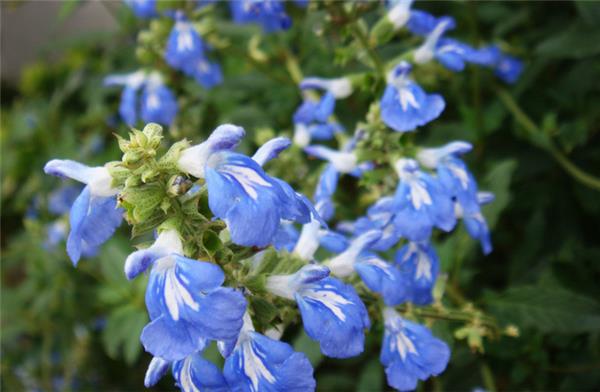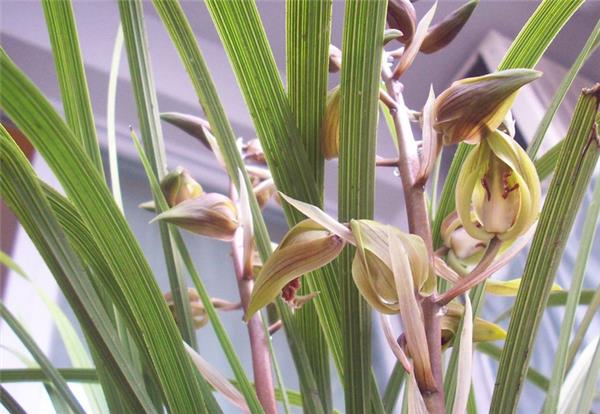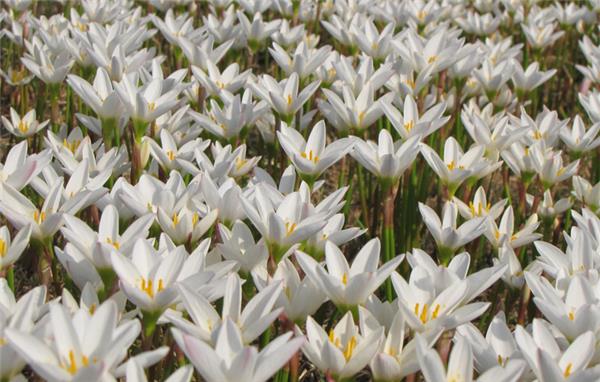[maintenance of orchid] how to grow orchid
Orchid is actually an orchid. There are many kinds of orchids. It is a very popular indoor flower. Because of its many styles and good flower shape, it is known as the first indoor flower. And breeding bluegrass also needs to pay special attention to skills, because it belongs to the more delicate flowers and plants. The following article will describe in detail the maintenance methods of bluegrass.

1. Maintenance of orchid flowers
Light. Orchids are semi-shady plants, love the sun, but do not expose themselves to the sun. Semi-overcast is the most appropriate, that is, it requires a shading rate of 50% to 70%. Generally, the shading rate is higher in summer, and the amount of light should be increased appropriately in winter and spring. Because the indoor light is easy to control, it is best to keep orchids indoors. If orchids are planted outdoors, some shading measures should be taken.
Temperature. Generally speaking, the temperature suitable for the growth of orchids is above 25 mi 30 °C, and different varieties of orchids have different temperature requirements. When the temperature exceeds 30 °C, we must pay attention to watering to cool down.
Humidity. Orchids have a higher requirement for humidity, which generally needs to maintain more than 80% relative humidity during the growth period from April to September, and can drop to about 50% in winter. Summer and autumn than winter and spring, sunny days than rainy days should pay more attention to let orchids absorb water. If you are sprinkling water, you can sprinkle it 3 times a day to wet the leaves and basin; if you are drenched with water, you can drench it every 3 days until there is water flowing out from the bottom of the basin.

II. Matters needing attention in the culture of orchid flowers
The wound should be protected against bacteria-when changing pots or ramets, if there is a wound in the root, you should first smear the wound with fungicide to prevent the invasion of germs.
Pots should not be too large-small plants grow in large pots, the amount of plant material is large, it is easy to lead to poor ventilation, watering is not easy to control. If watering absorbs too much water, the plant material is not easy to dry, and bacteria invade and cause rotten roots.
Orchids should be planted shallowly-do not plant orchids too deep, otherwise long-term moisture will rot. When planting, filling the root, base, or pseudobulb must be exposed.
The roots should be unfolded-when planting orchids, the roots should be spread evenly and should not be squeezed together, so that each root can touch the plant material and ventilation is good.
No watering for several days-newly planted orchids may hurt their roots, and the wound is coated with fungicides and left unwatered for 3-5 days in order to achieve efficacy and promote the growth of new buds and roots.
Avoid bright light-newly planted orchids must avoid direct sunlight to prevent dehydration, should be placed in a warm and shady place, and spray can be used to increase the humidity in the air until the orchids return to normal growth.

3. Culture methods of bluegrass
1. Soil selection
Peat soil, black mud, pine soil, pastoral soil, fern root, moss and bark can be used as the culture medium for orchids. To do a good job in the drainage function of the basin floor and increase its permeability, the drainage hole can be paved with tiles, and then laid with a layer of broken brick and stone grains, with a thickness of 1/4 of the depth of the basin floor, and finally the cultivated soil will be laid on the top. When planting orchids, they should be upright and inserted into the soil, and then covered with soil until the bulb. Compacting the soil, no filling within two centimeters, easy to irrigate. After planting, pour water thoroughly, place it in a cool environment, and move the half moon into a ventilated and sunny environment. The basin can be paved with small gravel, which can not only moisturize but also enhance ornamental.
2. Light and moisture
It is mentioned above that orchids do not come out in spring, not in summer, not dry in autumn, and not wet in winter, which is the principle of orchid culture. That is, because of the temperature in spring, getting out of the room is easy to be affected by the cold and affect the growth, so it is more appropriate to leave the room in April. Summer in the shade, do not direct sunlight, can be appropriate shade. Autumn is the sprouting period of orchids, and the maintenance of humidity is particularly important. In winter, it is necessary to control watering, because it needs less water, and too much water can easily lead to root and leaf diseases.

This is the end of the breeding method of bluegrass. Bluegrass, an extremely delicate flower, needs to be carried out in strict accordance with its breeding skills in order to ensure its growth. There are many kinds of bluegrass, and there are many valuable varieties, known as the boutique of flowers, its value is also very high, often appear in various exhibitions. The beauty of bluegrass makes countless people proud of it. Keeping it indoors can beautify the environment and edify the body and mind.
- Prev

[maintenance of lantern flowers] how to grow lantern flowers
[maintenance of lantern flowers] how to grow lantern flowers
- Next

[maintenance method of green clouds straight up flowers] how to raise green clouds straight up flowers
[maintenance method of green clouds straight up flowers] how to raise green clouds straight up flowers
Related
- Wuhan Hospital Iron Tree Blooming Result Was Instantly Frightened by the Gardener Master
- Which variety of camellia is the most fragrant and best? Which one do you like best?
- What is the small blue coat, the breeding methods and matters needing attention of the succulent plant
- Dormancy time and maintenance management of succulent plants during dormancy
- Minas succulent how to raise, Minas succulent plant pictures
- What are the varieties of winter succulent plants
- How to raise succulent plants in twelve rolls? let's take a look at some experience of breeding twelve rolls.
- Attention should be paid to water control for succulent plants during dormant period (winter and summer)
- Watering experience of twelve rolls of succulent plants
- Techniques for fertilizing succulent plants. An article will let you know how to fertilize succulent plants.

